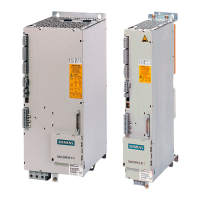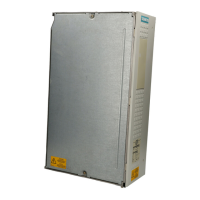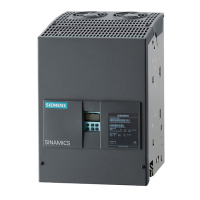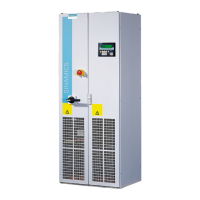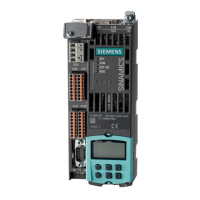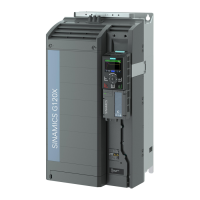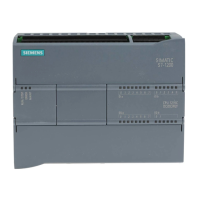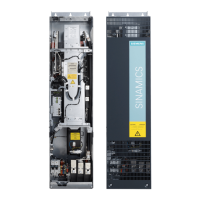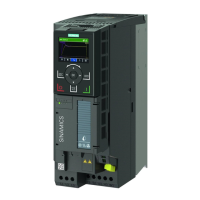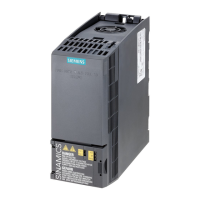5
05.01
5.1 Feed control with user–friendly and analog setpoint interface 6SN1118–0AA11–0AA1
5-104
Siemens AG 2001 All rights reserved
SIMODRIVE 611 Planning Guide (PJU) – 05.01 Edition
Table 5-3 Interface overview, feed control, user–friendly interface
Term.
No.
Max. cross–sect.Typ. voltage/limit values
Type
1)
FunctionDesig.
289
288
290
291
293
294
296
297
299
X341
X341
X341
X341
X341
X341
X341
X341
X341
Relay signals, center contact
Speed controller at its endstop
I
2
t monitoring
Motor overtemperature
Tachometer/rotor position
encoder fault
I
NO
NC
NO
NC
NO
NC
NO
NC
4)
Max. 30 V/1 A
Max. 30 V/1 A
Max. 30 V/1 A
Max. 30 V/1 A
Max. 30 V/1 A
Max. 30 V/1 A
Max. 30 V/1 A
Max. 30 V/1 A
1.5 mm
2
1.5 mm
2
1.5 mm
2
1.5 mm
2
1.5 mm
2
1.5 mm
2
1.5 mm
2
1.5 mm
2
1.5 mm
2
672
673
674
X341
X341
X341
Ready/fault signal
NO
I
NC
30 V/1 A
4)
30 V/1 A
30 V/1 A
1.5 mm
2
1.5 mm
2
1.5 mm
2
X311 Motor encoder
X151 Equipment bus
1) I=input; O=output; NC=NC contact; NO=NO contact (for signal NO=high/NC=low)
2) Differential input reference point
The common mode range of the differential input is24 V with respect to PE potential and may not
be exceeded.
3) Reference ground, terminal 19 NE/monitoring module (this may not be connected with the general reference
ground, terminal 15)
4) Voltages referred to PE potential
5) Terminal 15 on the NE module is the reference ground
6) Refer to Section 6.3
Note
The drive shuts down and the pulses inhibited after approx. 4 s when the ”heat-
sink overtemperature” switch responds.
The SIMODRIVE 611 feed modules with closed–loop control for the 1FT5
servomotors have an evaluation circuit, for the PTC thermistor integrated in the
motor winding.
The motors should be protected from inadmissibly high winding temperatures
using the monitoring combination (release temperature 150°C).
When the response temperature is reached, it is only signaled at the
SIMODRIVE 611 via an individual fault signal, terminals 289/294/296 and
centrally via terminals 5.1, 5.2 and 5.3 of the feed module as the drive should
not intervene directly in the machining process and disturb operation.
There is no internal system shutdown function to protect the motor. The user
must ensure that the motor can thermally recover immediately after the
temperature signal is output, by appropriately designing the adaptation
control. It may be necessary to shut down the motor immediately.
A delay time is not permissible.
If the motor is not thermally monitored, then the complete drive could be
destroyed if an overload condition occurs, or if the drive converter was
over–dimensioned.
Evaluation of the
motor PTC
thermistor for
temperature
monitoring
5 Control Modules
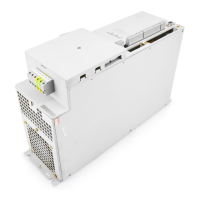
